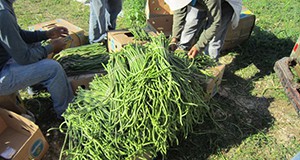 Food diversity, nutritional food supply, and profitability are the priorities of agricultural and horticultural industries. To diversify vegetable products and increase the Florida vegetable industry's competitiveness, a number of new vegetable crops are rapidly emerging in the state. Due to Florida's favorable climate, these vegetable crops grow well and have high market potential. The objective of this 6-page fact sheet is to provide a general overview of long bean, one of the Asian vegetable crops grown in Florida. Written by Kshitij Khatri, Guodong Liu, Qingren Wang, Yuncong Li, David Dinkins, and Bonnie Wells, and published by the UF Department of Horticultural Sciences, October 2015.
Food diversity, nutritional food supply, and profitability are the priorities of agricultural and horticultural industries. To diversify vegetable products and increase the Florida vegetable industry's competitiveness, a number of new vegetable crops are rapidly emerging in the state. Due to Florida's favorable climate, these vegetable crops grow well and have high market potential. The objective of this 6-page fact sheet is to provide a general overview of long bean, one of the Asian vegetable crops grown in Florida. Written by Kshitij Khatri, Guodong Liu, Qingren Wang, Yuncong Li, David Dinkins, and Bonnie Wells, and published by the UF Department of Horticultural Sciences, October 2015.
http://edis.ifas.ufl.edu/hs1268
Tag: Guodong Liu
What is 4R nutrient stewardship?
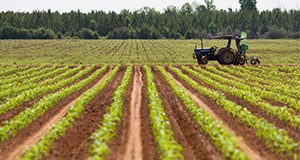
A new and innovative approach to Best Management Practices for fertilizer application known as 4R nutrient stewardship is available, to ensure the environmental, social, and economical sustainability of commercial crop production. This 3-page fact sheet focuses on the basic concepts of the 4R nutrient stewardship principles for commercial crop production. Written by Guodong Liu, Kelly Morgan, Yuncong Li, Lincoln Zotarelli, James DeValerio, and Qingren Wang, and published by the UF Department of Horticultural Sciences, July 2015.
http://edis.ifas.ufl.edu/hs1264
Controlled-Release and Slow-Release Fertilizers as Nutrient Management Tools
 There are many fertilizer sources available for commercial crop production. The characteristics of each fertilizer type determine whether its use poses an advantage or a disadvantage to a farmer. This 6-page fact sheet focuses on how to select the right fertilizer to enhance profitability and satisfy best management practices (BMPs). Written by Guodong Liu, Lincoln Zotarelli, Yuncong Li, David Dinkins, Qingren Wang, and Monica Ozores-Hampton, and published by the UF Department of Horticultural Sciences, October 2014. (UF/IFAS Photo by Thomas Wright)
There are many fertilizer sources available for commercial crop production. The characteristics of each fertilizer type determine whether its use poses an advantage or a disadvantage to a farmer. This 6-page fact sheet focuses on how to select the right fertilizer to enhance profitability and satisfy best management practices (BMPs). Written by Guodong Liu, Lincoln Zotarelli, Yuncong Li, David Dinkins, Qingren Wang, and Monica Ozores-Hampton, and published by the UF Department of Horticultural Sciences, October 2014. (UF/IFAS Photo by Thomas Wright)
http://edis.ifas.ufl.edu/hs1255
Soil pH Management for Optimum Commercial Fruit Production in Florida
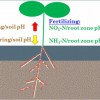 Soil pH is one of the most important soil chemical properties and affects nutrient bioavailability and microbial activity. The purpose of this article is to provide an overview for faculty, crop consultants, crop advisors, fruit growers, and students who are interested in fruit production. The crop response to soil pH varies due to crop genetic diversity. Soil pH determines nutrient bioavailability and hence fruit growth, yield, and quality. This 6-page fact sheet was written by Guodong Liu, Rao Mylavarapu, Ed Hanlon, and Wei Chieh Lee, and published by the UF Department of Horticultural Sciences, April 2014.
Soil pH is one of the most important soil chemical properties and affects nutrient bioavailability and microbial activity. The purpose of this article is to provide an overview for faculty, crop consultants, crop advisors, fruit growers, and students who are interested in fruit production. The crop response to soil pH varies due to crop genetic diversity. Soil pH determines nutrient bioavailability and hence fruit growth, yield, and quality. This 6-page fact sheet was written by Guodong Liu, Rao Mylavarapu, Ed Hanlon, and Wei Chieh Lee, and published by the UF Department of Horticultural Sciences, April 2014.
http://edis.ifas.ufl.edu/hs1234
Application of Surfactants in Commercial Crop Production for Water and Nutrient Management in Sandy Soil
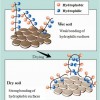 Water-repellent soils are unable to effectively adsorb or retain water. On these soils, water may simply pool on the surface or may move down preferred pathways, leaving large amounts of soil dry even when a large volume of water is applied. Thus, managing water and nutrients in sandy soils is often challenging. This 6-page fact sheet provides an overview of surfactants and how they may be used to better manage water and nutrients in sandy soils for vegetable and fruit production. Written by Guodong Liu, Monica Ozores-Hampton, Gene McAvoy, Ben Hogue, and Crystal A. Snodgrass, and published by the UF Department of Horticultural Sciences, October 2013.
Water-repellent soils are unable to effectively adsorb or retain water. On these soils, water may simply pool on the surface or may move down preferred pathways, leaving large amounts of soil dry even when a large volume of water is applied. Thus, managing water and nutrients in sandy soils is often challenging. This 6-page fact sheet provides an overview of surfactants and how they may be used to better manage water and nutrients in sandy soils for vegetable and fruit production. Written by Guodong Liu, Monica Ozores-Hampton, Gene McAvoy, Ben Hogue, and Crystal A. Snodgrass, and published by the UF Department of Horticultural Sciences, October 2013.
http://edis.ifas.ufl.edu/hs1230
What is urea-triazone nitrogen?
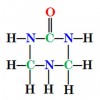 Foliar application of nitrogen and other nutrients essential for plant growth and development is an important practice for crop production. Most foliar nutrient N products contained the traditional N sources such as ammonium, nitrate and/or urea before urea-triazone N was available on the market. The traditional N sources have a greater salt index and leaf-burn potential than urea-triazone N. To avoid or minimize leaf burning, urea-triazone N fertilizers can be used instead of the traditional N sources. But growers have concerns about the safety of using triazone N fertilizers for commercial crop production because the fertilizers are still new to them. This 2-page fact sheet provides basic information on urea-triazone-based fertilizer for county faculty, crop consultants and advisors, growers, and students interested in commercial crop production. Written by Guodong Liu and Jeffrey Williamson, and published by the UF Department of Horticultural Sciences, October 2013.
Foliar application of nitrogen and other nutrients essential for plant growth and development is an important practice for crop production. Most foliar nutrient N products contained the traditional N sources such as ammonium, nitrate and/or urea before urea-triazone N was available on the market. The traditional N sources have a greater salt index and leaf-burn potential than urea-triazone N. To avoid or minimize leaf burning, urea-triazone N fertilizers can be used instead of the traditional N sources. But growers have concerns about the safety of using triazone N fertilizers for commercial crop production because the fertilizers are still new to them. This 2-page fact sheet provides basic information on urea-triazone-based fertilizer for county faculty, crop consultants and advisors, growers, and students interested in commercial crop production. Written by Guodong Liu and Jeffrey Williamson, and published by the UF Department of Horticultural Sciences, October 2013.
http://edis.ifas.ufl.edu/hs1233
Conversions of parts per million on soil test reports to pounds per acre
 Soil testing and the resulting fertilization recommendations are critical for appropriate nutrient management in commercial vegetable production, but growers and soil experts sometimes speak different languages. This 8-page fact sheet provides a simple conversion method for crop consultants, crop advisors, growers, students, and researchers who are interested in nutrient and water management of crop production. Written by Guodong Liu, Yuncong Li, and Aparna Gazula, and published by the UF Department of Horticultural Sciences, August 2013.
Soil testing and the resulting fertilization recommendations are critical for appropriate nutrient management in commercial vegetable production, but growers and soil experts sometimes speak different languages. This 8-page fact sheet provides a simple conversion method for crop consultants, crop advisors, growers, students, and researchers who are interested in nutrient and water management of crop production. Written by Guodong Liu, Yuncong Li, and Aparna Gazula, and published by the UF Department of Horticultural Sciences, August 2013.
http://edis.ifas.ufl.edu/hs1229
Soil Preparation And Liming for Vegetable Gardens
 Probably the most physical part of vegetable gardening is preparing the soil for planting. In large gardens, mechanical equipment, such as rototillers or tractor-drawn plows, often is necessary, and it may be practical to rent such equipment or hire someone. However, in smaller gardens, the task can be accomplished with a spade, spading fork, or shovel. Much depends on the type of roots and vegetation that must be removed.This 2-page fact sheet was written by James M. Stephens and Guodong Liu, and published by the UF Department of Horticultural Sciences, June 2013.
Probably the most physical part of vegetable gardening is preparing the soil for planting. In large gardens, mechanical equipment, such as rototillers or tractor-drawn plows, often is necessary, and it may be practical to rent such equipment or hire someone. However, in smaller gardens, the task can be accomplished with a spade, spading fork, or shovel. Much depends on the type of roots and vegetation that must be removed.This 2-page fact sheet was written by James M. Stephens and Guodong Liu, and published by the UF Department of Horticultural Sciences, June 2013.
http://edis.ifas.ufl.edu/vh024
Understanding and Applying Chelated Fertilizers Effectively Based on Soil pH (HS1208)
 Plant nutrients are one of the environmental factors essential for crop growth and development. Nutrient management is crucial for optimal productivity in commercial crop production. Those nutrients in concentrations of ≤ 100 parts per million (ppm) in plant tissues are described as micronutrients and include iron (Fe), zinc (Zn), manganese (Mn), copper (Cu), boron (B), chlorine (Cl), molybdenum (Mo), and nickel (Ni). Micronutrients such as Fe, Mn, Zn, and Cu are easily oxidized or precipitated in soil, and their utilization is, therefore, not very efficient. Chelated fertilizers have been developed to increase micronutrient utilization efficiency. This 5-page fact sheet provides an overview of chelated fertilizers and considerations for their use to county Extension faculty, growers, and students who are interested in commercial crop production. Written by Guodong Liu, Edward Hanlon, and Yuncong Li, and published by the UF Department of Horticultural Sciences, November 2012.
Plant nutrients are one of the environmental factors essential for crop growth and development. Nutrient management is crucial for optimal productivity in commercial crop production. Those nutrients in concentrations of ≤ 100 parts per million (ppm) in plant tissues are described as micronutrients and include iron (Fe), zinc (Zn), manganese (Mn), copper (Cu), boron (B), chlorine (Cl), molybdenum (Mo), and nickel (Ni). Micronutrients such as Fe, Mn, Zn, and Cu are easily oxidized or precipitated in soil, and their utilization is, therefore, not very efficient. Chelated fertilizers have been developed to increase micronutrient utilization efficiency. This 5-page fact sheet provides an overview of chelated fertilizers and considerations for their use to county Extension faculty, growers, and students who are interested in commercial crop production. Written by Guodong Liu, Edward Hanlon, and Yuncong Li, and published by the UF Department of Horticultural Sciences, November 2012.
http://edis.ifas.ufl.edu/hs1208
Soil pH Range for Optimum Commercial Vegetable Production (HS1207)
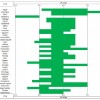 Soil pH affects nutrient bioavailability by controlling the chemical forms of nutrients. This 11-page fact sheet provides information about soil pH basics to commercial growers, county Extension agents, and college students specializing in vegetable production. Written by Guodong Liu and Edward Hanlon, and published by the UF Department of Horticultural Sciences, October 2012.
Soil pH affects nutrient bioavailability by controlling the chemical forms of nutrients. This 11-page fact sheet provides information about soil pH basics to commercial growers, county Extension agents, and college students specializing in vegetable production. Written by Guodong Liu and Edward Hanlon, and published by the UF Department of Horticultural Sciences, October 2012.
http://edis.ifas.ufl.edu/hs1207
How to Reduce Clogging Problems in Fertigation (HS1202)
 Fertigation is the process of applying fertilizers through an irrigation system by injecting them into the water. Because of its effectiveness and efficiency, fertigation is widely used in vegetable and fruit production. However, clogging of lines and emitters may become a problem. This 7-page fact sheet provides practical suggestions for better fertigation management so growers can reduce clogging problems. Written by Guodong Liu and Gene McAvoy, and published by the UF Department of Horticultural Sciences, June 2012.
Fertigation is the process of applying fertilizers through an irrigation system by injecting them into the water. Because of its effectiveness and efficiency, fertigation is widely used in vegetable and fruit production. However, clogging of lines and emitters may become a problem. This 7-page fact sheet provides practical suggestions for better fertigation management so growers can reduce clogging problems. Written by Guodong Liu and Gene McAvoy, and published by the UF Department of Horticultural Sciences, June 2012.
http://edis.ifas.ufl.edu/hs1202
How to Convert Liquid Fertilizer into Dry Fertilizer in Fertigation for Commercial Vegetable and Fruit Crop Production (HS1200/HS1200)
 In recent years, more and more liquid fertilizers have been used in vegetable and fruit production. Typically, UF/IFAS recommendations are expressed as pounds per acre or kilograms per hectare. Thus, conversion either from a dry fertilizer basis (the UF/IFAS recommendation) to a liquid fertilizer basis, or from a liquid fertilizer source to the UF/IFAS recommended nutrient rate is often required for correct application rate. This 5-page fact sheet helps growers understand the conversion method from liquid to dry fertilizer. Written by Guodong Liu, David Sui, and Gary K. England, and published by the UF Department of Horticultural Sciences, April 2012.
In recent years, more and more liquid fertilizers have been used in vegetable and fruit production. Typically, UF/IFAS recommendations are expressed as pounds per acre or kilograms per hectare. Thus, conversion either from a dry fertilizer basis (the UF/IFAS recommendation) to a liquid fertilizer basis, or from a liquid fertilizer source to the UF/IFAS recommended nutrient rate is often required for correct application rate. This 5-page fact sheet helps growers understand the conversion method from liquid to dry fertilizer. Written by Guodong Liu, David Sui, and Gary K. England, and published by the UF Department of Horticultural Sciences, April 2012.
http://edis.ifas.ufl.edu/hs1200
Are Phosphorous and Phosphoric Acids Equal Phosphorous Sources for Plant Growth? (HS1010/HS254)
 Phosphorus (P) is one of the 17 elements essential for plant growth and development, and is also a key component in some agrochemicals, such as phosphorous acid. Thus, there are two types of P closely associated with crop production. The similarity of terms such as phosphoric acid and phosphorous acid may create some confusion as to the actual content and efficacy of these products. This 7-page fact sheet explains what phosphorous acid is and examines both its fungicidal activity and nutrient value. Written by Asha M. Brunings, Guodong Liu, Eric H. Simonne, Shouan Zhang, Yuncong Li, and Lawrence E. Datnoff, and published by the UF Department of Horticultural Sciences, March 2012.
Phosphorus (P) is one of the 17 elements essential for plant growth and development, and is also a key component in some agrochemicals, such as phosphorous acid. Thus, there are two types of P closely associated with crop production. The similarity of terms such as phosphoric acid and phosphorous acid may create some confusion as to the actual content and efficacy of these products. This 7-page fact sheet explains what phosphorous acid is and examines both its fungicidal activity and nutrient value. Written by Asha M. Brunings, Guodong Liu, Eric H. Simonne, Shouan Zhang, Yuncong Li, and Lawrence E. Datnoff, and published by the UF Department of Horticultural Sciences, March 2012.
http://edis.ifas.ufl.edu/hs254
How to Calculate Fertigation Injection Rates for Commercial Blueberry Production (HS1197)
 To increase nutrient and water use efficiencies and reduce nutrient leaching and environmental concerns, fertigation is recommended for commercial blueberry production. In fact, successful fertigation can enhance sustainability and maximize profitability for commercial blueberry enterprises. One of the key factors in fertigation is the correct calculation of fertilizer injection rate and time for the acreage. This publication helps blueberry growers correctly calculate fertigation injection rates and times and provides reference tables for checking injection rates and times needed for a variety of production scenarios. This 3-page fact sheet was written by Guodong Liu, Jeffrey Williamson, Gary England, and Alicia Whidden, and published by the UF Department of Horticultural Sciences, March 2012.
To increase nutrient and water use efficiencies and reduce nutrient leaching and environmental concerns, fertigation is recommended for commercial blueberry production. In fact, successful fertigation can enhance sustainability and maximize profitability for commercial blueberry enterprises. One of the key factors in fertigation is the correct calculation of fertilizer injection rate and time for the acreage. This publication helps blueberry growers correctly calculate fertigation injection rates and times and provides reference tables for checking injection rates and times needed for a variety of production scenarios. This 3-page fact sheet was written by Guodong Liu, Jeffrey Williamson, Gary England, and Alicia Whidden, and published by the UF Department of Horticultural Sciences, March 2012.
http://edis.ifas.ufl.edu/hs1197
Controlled-Release Fertilizers for Potato Production in Florida (HS941/HS187)
 The recent emphasis on the development of vegetable production best management practices has prompted a re-examination of fertilization practices in Florida potato production in the St. Johns River watershed. The numbers provided in this 5-page fact sheet serve as a starting point for discussion about the value of using controlled-release fertilizers, which can be a win-win-win opportunity for producers, manufacturers, and regulatory agencies by helping all meet their production, business, and environmental goals. Written by Guodong Liu, Eric H. Simonne, Yuncong Li, Chad M. Hutchinson, Mark Warren, and Steven Lands, and published by the UF Department of Horticultural Sciences, October 2011. (UF/IFAS Photo by Tyler Jones)
The recent emphasis on the development of vegetable production best management practices has prompted a re-examination of fertilization practices in Florida potato production in the St. Johns River watershed. The numbers provided in this 5-page fact sheet serve as a starting point for discussion about the value of using controlled-release fertilizers, which can be a win-win-win opportunity for producers, manufacturers, and regulatory agencies by helping all meet their production, business, and environmental goals. Written by Guodong Liu, Eric H. Simonne, Yuncong Li, Chad M. Hutchinson, Mark Warren, and Steven Lands, and published by the UF Department of Horticultural Sciences, October 2011. (UF/IFAS Photo by Tyler Jones)
http://edis.ifas.ufl.edu/hs187
Nickel Nutrition in Plants (HS1191)
This 5-page fact sheet introduces agricultural and horticultural producers to the role and function of the newest identified essential plant nutrient, nickel (Ni). Written by Guodong Liu, E. H. Simonne, and Yuncong Li, and published by the UF Department of Horticultural Sciences, June 2011.
http://edis.ifas.ufl.edu/hs1191